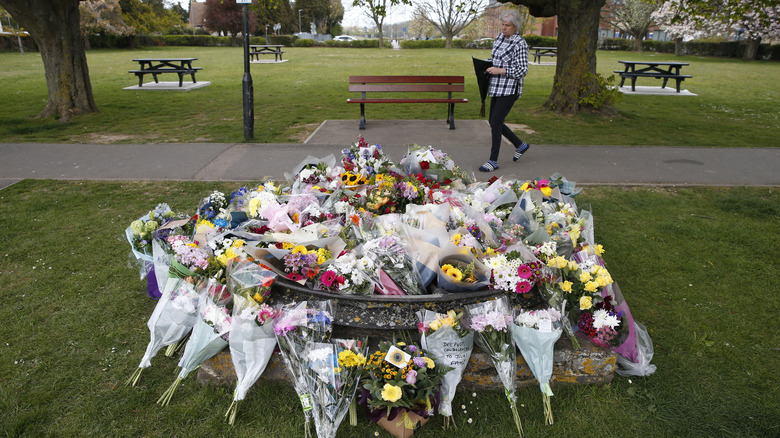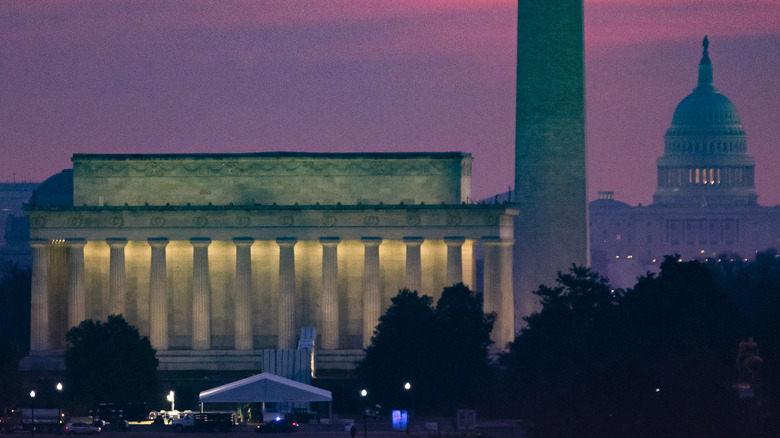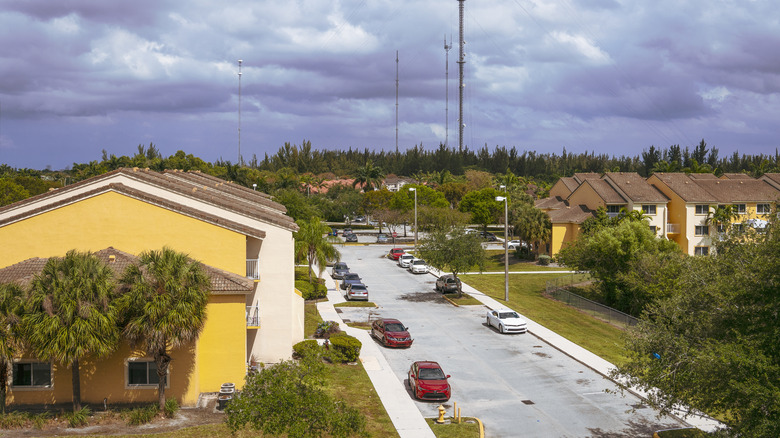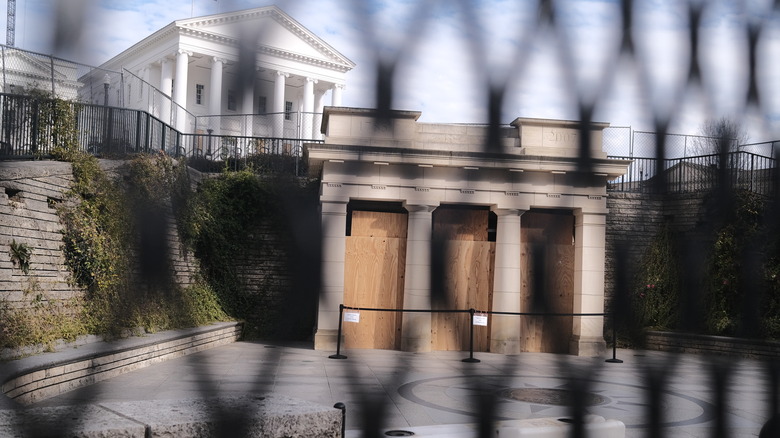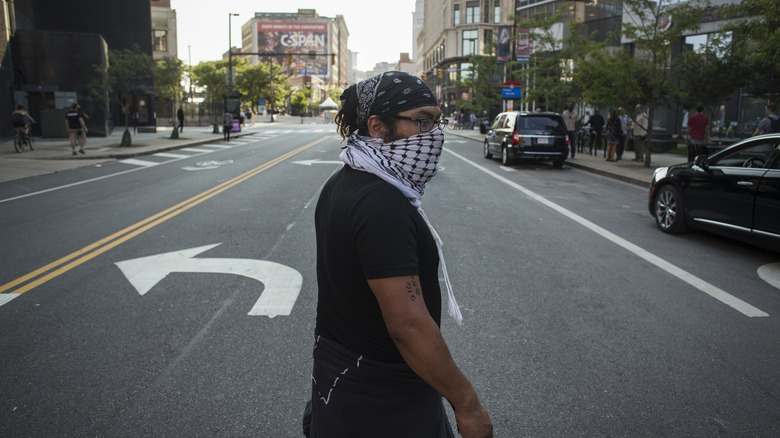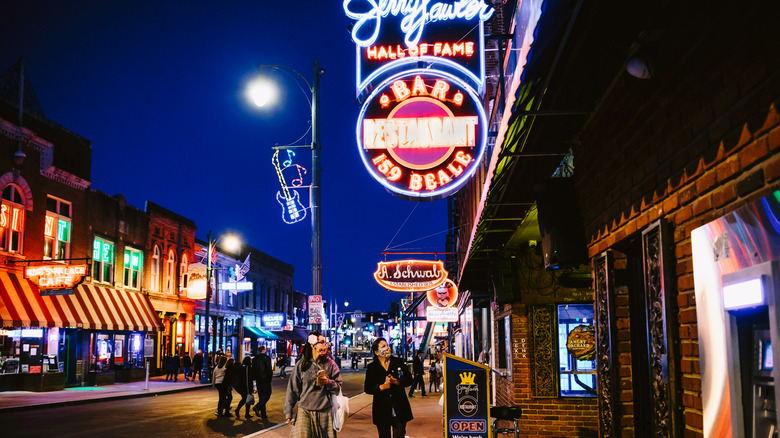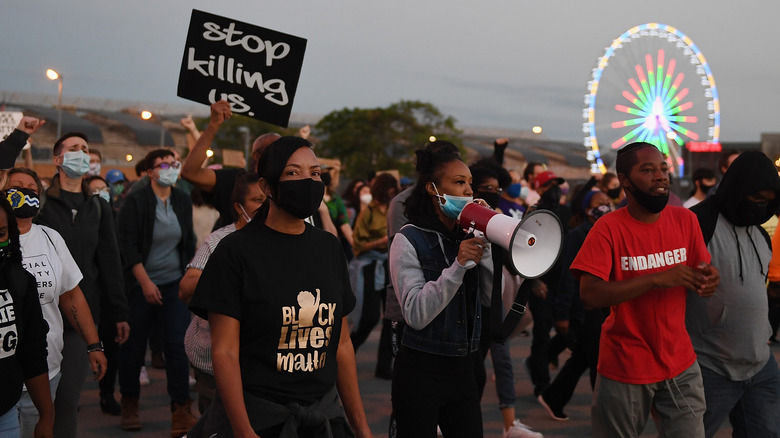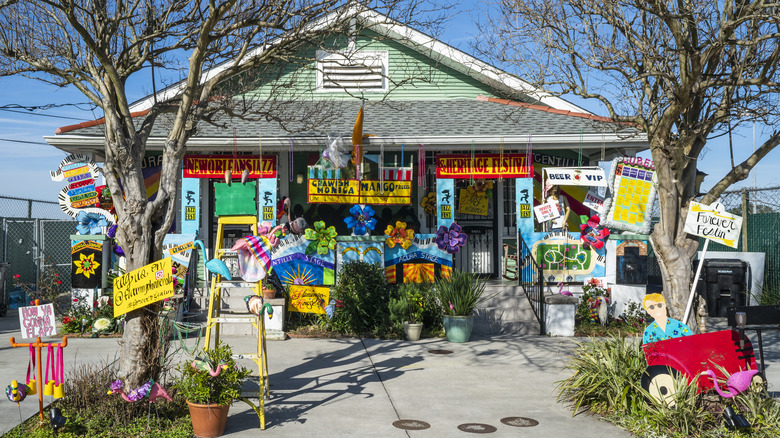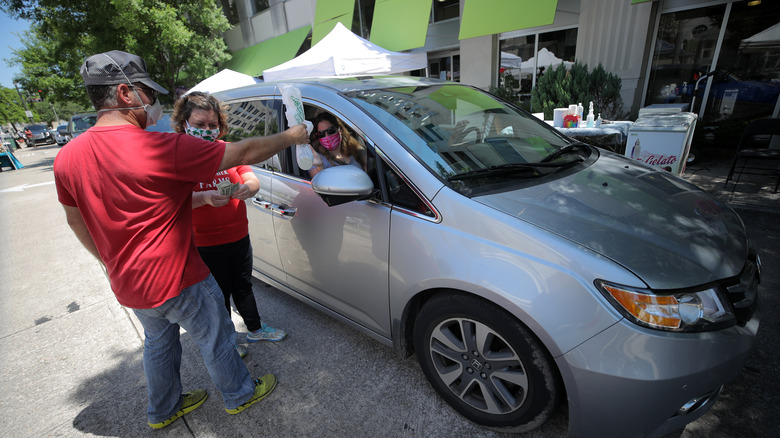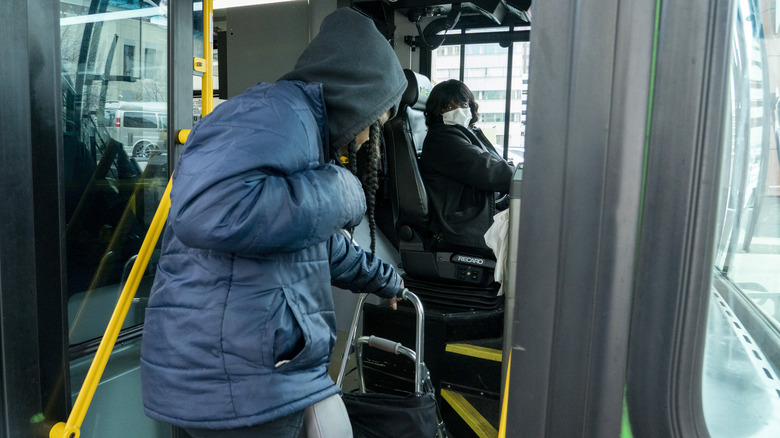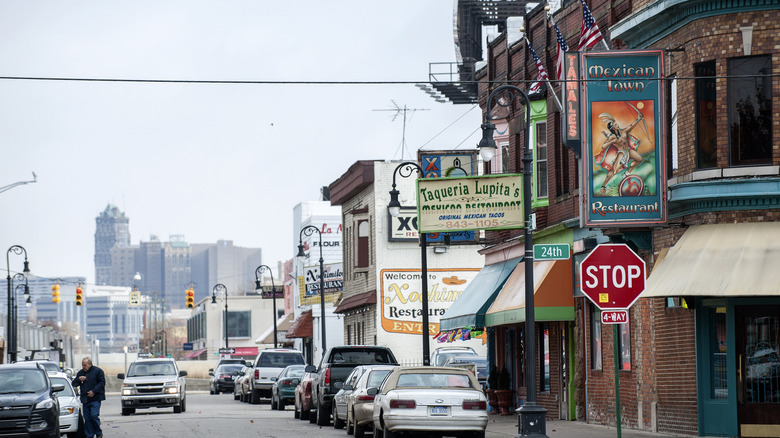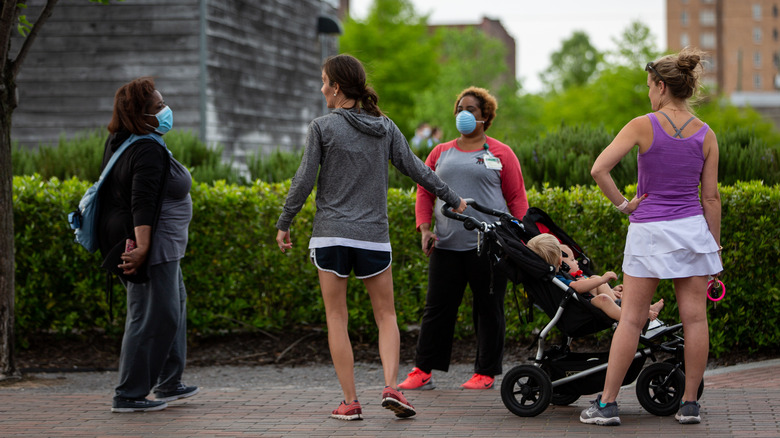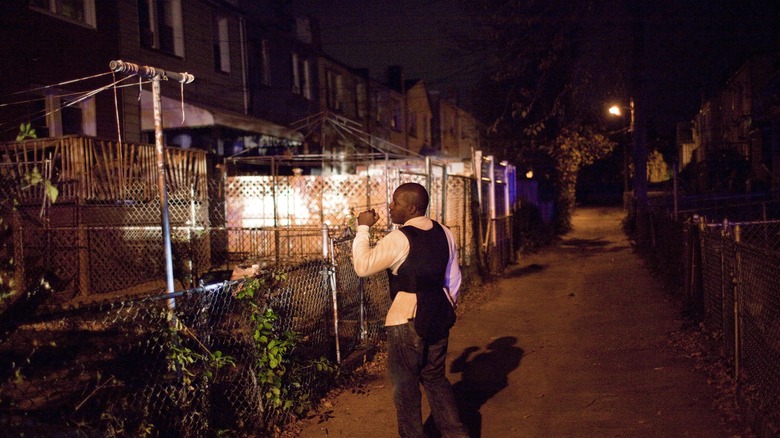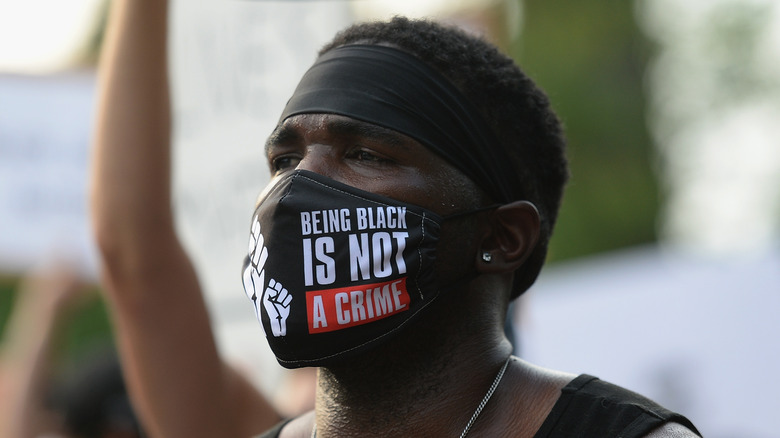The Most Dangerous 21st Century American Cities By Murder Rate
According to CBS News, 16,425 people in the United States were murdered in 2019, which was a 0.3% increase from the year prior. This comes in stark contrast to the country over the past 30 years. These statistics came from the FBI's Crime in the United States data, the U.S. Census Bureau, and data from local police departments.
The Brennan Center has calculated the homicide rates in the U.S. since 1990, and they found that over the period, the homicide rate has been more than cut in half. At its height in 1991, the homicide rate in the country was 9.8 per 100,000 (meaning for every 100,000 individuals, there were just under 10 murders). The lowest point of homicide rates came in 2014 when the murder rate was 4.4 per 100,000. Since then, the rate has gone up to around 5.4 and has steadily stayed around that number.
Using the murder rate per 100,000 citizens and the information from the FBI, police departments, and the United States Census Bureau, cities in the nation have found where they place in terms of how their murder rate looks in comparison to the rest of the country. Here are the most dangerous cities in the United States since the year 2000.
Issues in the Nation's Capital
Someone from outside the United States would assume that Washington D.C., the nation's capital, would be one of the country's most protected and safe cities. However, past 1600 Pennsylvania Avenue, the city suffers from poverty, gangs, drugs, and homicides. In 2019, Washington, D.C. had a murder rate of 23.52 per 100,000.
In the first few years of the 21st century, the nation's capital murder rate was around double what it is today. According to Macro Trends, D.C. held a murder rate of 41.78 per 100,000 in 2000. Two years later, it had increased to 46.24 per 100,000. Since then, the capital has seen this number decrease considerably. It hit its lowest point in 2012, with a murder rate of 13.92 per 100,000.
Unfortunately, since its lowest point in 2012, the murder rate has steadily increased. The DCist reports that 2020 hit a 15-year high in terms of homicides in the city. Lawmakers, activists, residents, and others theorized different issues leading to the increase in violence, including wealth inequality, lack of economic and job opportunities, racial strife, and officers pulling out of areas because of the protests in 2020, all while being exacerbated because of the COVID lockdowns.
Miami Gardens Sees Improvement During the Pandemic Year
In the sunshine state of Florida, the city of Miami Gardens had the highest murder rate within its borders throughout the 21st century. For the city, as told by Macro Trends, its highest point in the past decade and a half was in 2007, when the city's murder rate was 24.30 per 100,000. After a few years of declining numbers, the murder rate has been steadily rising since 2014.
Unlike D.C., as reported by The Miami Herald, 2020 saw a decrease in the murder rate and overall crimes for Miami Gardens, though Miami-Dade County as a whole saw an overall increase in murders. Homicides in Miami Gardens dropped 33%, and other crimes, such as forcible sex offenses and burglaries, dropped 31%. For Miami-Dade, murders increased by 31%.
The nickname, "Murder Gardens" was spawned in the late 2000s and early 2010s when the murder rate was at its peak. However, residents in the majority African American community believed this moniker was unfair and rooted in racial bias towards the Black community.
Police Chief Delma Noel-Pratt had this to say about the decrease in violence in 2020. "We are truly proud of the dedication and hard work displayed by the men and women of the Miami Gardens Police Department. The reduction in overall crime in the city is a result of our combined efforts with our federal, state, and local partners, as well as our vigilant residents."
Richmond ticking towards numbers not seen since the 1990s
According to Macro Trends, Richmond experienced its worst year in 2004 when the city had a murder rate of 47.29 per 100,000. Since then, the rate has dropped to a fraction of the 2004 mark. Just four years later, in 2008, the murder rate was 15.53 per 100,000.
In findings studied by Church Hill People's News, there have been only three months since 1980 that a murder did not take place in the city. From 1988 to 1998, over 100 people were murdered in the city yearly. By the turn of the 21st century, those numbers dipped significantly. Even the 2004 statistic paled in comparison to the heights in the mid-1990s. Unfortunately, since 2013, Richmond has been trending upwards. Each year, the city's murder rate has ticked up slowly.
While between 2013-2015, the number has only gone up by barely two points (17.38 to 19.47), this number went up by three between 2015-2018 (19.47 to 22.62). By 2019, that number increased again to 23.84 per 100,000, the highest number since 2007.
Cleveland Violence Leads Councilman to compare it to War
In 2019, Cleveland's murder rate was 24.09 per 100,000. Unfortunately, during the pandemic year of 2020, Cleveland saw that number increase exponentially, prompting Cleveland City Councilman Michael Polensek to call it "like war numbers" when discussing the number of citizens who suffered from the increased violence.
During the first decade of the 21st century, the city's murder rate would not have warranted it to be on this list. According to Macro Trends, in 2000, the murder rate in the city was only 14.03 per 100,000. For the next decade and a half, Cleveland's murder rate fluctuated between 14 to 23 per 100,000. This changed in 2016 when the murder rate exploded to 34.95 per 100,000. Since then, while the numbers have decreased from the outlier year, they have not reached the low of the year 2000.
Dan Flannery, director of the Begun Center for Violence Prevention Research Education at Case Western Reserve University, said along with the factors stated above, also an increase in drug use and domestic violence, coupled with isolation, are contributing factors to the uptick in the 2020 homicides.
"You put all those things together and it's a bad recipe for hoping things stay calm ... There's a lot of stress and anger and despair out there."
Memphis Sets Record Numbers during the Pandemic
According to Macro Trends, Memphis' murder rate jumped nearly 10 points between 2015 to 2016 (20.52 to 29.86). Similar to Cleveland, the pandemic year saw the city's violence increase. According to WMA Action News, by the beginning of December 2020, the city achieved a disturbing feat for the first time in its history by surpassing 300 homicides. And if early findings show, this feat will be achieved again in 2021.
Commercial Appeal found that at the current pace, the Music City could reach a new record by the end of 2021. At the beginning of March, Memphis had already recorded 55 homicides, 46 of which police considered murders (excluding justified and negligent homicides). Still, by this time in 2020, the city had only 29 murders. In comparison, the 2019 year saw 191 murders for the Music City, 99 fewer than 2020 and not counting the 82 interstate shootings, Fox 13 Memphis reports.
To combat the increase in gun violence, the district attorney's office is pushing for the city to adopt legislation that would prevent Memphis citizens from carrying arms themselves. This was tweeted out by the office of District Attorney Amy Weirich.
"We are fighting legislation that would allow anyone and everyone to carry a gun, we are giving gun crimes our highest priority and we are urging every Shelby (County) citizen to take a stand against gun violence."
Racial Tension and Police Distrust Contributes to Kansas City Violence
At almost 30 per 100,000, Kansas City, Missouri, has continued to increase its murder rate since 2014. In that year, the city's murder rate was nearly split in half at 16.65, Marco Trends reports. However, the number would explode to 30.93 by 2017. The next two years would not see these numbers be reached again, but the pandemic year spelled disaster for Kansas City, in more ways than one.
Like most of the cities featured, 2020 saw an increase in violence, leading to a record-setting year for the number of murders in Kansas City. KC TV 5 reports that by the end of 2020, Kansas City had 174 homicides within its borders. This broke the previous record of 153 homicides set in 1993. Kansas City was up 28% in terms of homicides from the previous year, which follows the nation, which was up 29%. Criminologists believe that aside from the obvious impact of the coronavirus and its effects, Kansas City and many large cities faced unrest and increased tension from the racial protests during the spring and summer from the high profile murders of George Floyd, Breonna Taylor, and other African Americans.
New Orleans Gangs Continues Deadly Legacy in the City
With a murder rate of 30.67 per 100,000 in 2019, New Orleans has improved when compared to where they were a few decades ago. According to The New York Times, since 1993, the "Big Easy" has been anything but. During this span of nearly three decades, New Orleans has held the highest murder rate every year a dozen times. Also, Hurricane Katrina left a sizable impact in terms of homicides in the city. In 2006, a year after the hurricane, the city's murder rate was 37.57 per 100,000. In 2007, that number exploded to 94.47 per 100,000, reports Macro Trends.
However, before 2020, the city of New Orleans' murder rate had been decreasing over the past four years. This all changed in 2020 when, as told by WWL TV, homicides had increased by an astonishing 87% during 2020, while murder arrests had gone down by 16%.
Metropolitan Crime Commission President Rafael Goyeneche said that gang violence is the reason for the increasing homicide numbers. "Every unsolved shooting, every unsolved homicide begets and fuels retaliatory justice and that's what's spiking the crime rate."
This was supported by LSU Criminologist Peter Scharf, who had this to say about the city's drug issue. "We've just become very tolerant of the drug trade. We're tolerant of the drug trade and when the drug trade comes into competition, people die."
2021 Starts Off Violent in Baton Rouge
Somehow, despite its history of homicides, New Orleans might not even be the worst city on this list from Louisiana. Baton Rouge holds a murder rate of 31.72 per 100,000 in 2019, and the city saw its increase in violence a decade after New Orleans saw its own 2007. Macro Trends reports that in 2017, Baton Rouge's murder rate increased by 18 percentage points from the previous year (20.58 to 38.26), and the city has stayed around that number ever since.
The Advocate found that in the first month of 2021, East Baton Rouge experienced its deadliest month in over a decade. With 16 murders in January, Baton Rouge is on pace to hit nearly 200 by the end of 2021. In 2020, the city set an all-time high with 114 murders during the year.
These numbers are a far cry from the beginning of the decade. In 2003, Baton Rouge's murder rate was about half of what it was in 2019, at a mere 18.11 per 100,000. Despite an increase by the end of the 2000s, only in 2009, with a murder rate of 33.60, did the numbers equal or surpass the past four years.
Since 2019, Dayton's Violence has Exploded
In 2018, Dayton's murder rate was 26.38 per 100,000, which would be the highest murder rate for the Ohio city in the 21st century to that point. However, in 2019, that number exploded by 7.8 points and became 34.18 per 100,000. According to WHIO TV, 2020 was an even worst year, and this trend has continued into the early months of 2021.
Dayton Police Chief, Richard Biehl had this to say about the past few years in his city. "This, this past year was the worst. '19 was the second-worst, so not a good trend."
Unlike Kansas City, which theorized that the racial strife between officers and the African American community led to increased violence, Dayton's police do not believe the protests had anything to do with the increase nor the restrictions because of COVID, as they did not see an increase during the first three months of lockdowns.
In this century, Dayton's murder rate has been on the lower end in comparison to the other cities on the list. In 10 of the 20 years of the 21st century, the city's murder rate has been less than 20 per 100,000. The first noticeable spike came in 2002 when the number went up to 25.12 per 100,000, though it would not be until 2009 when this was topped.
Overall, Detroit is the country's most violent city
Detroit's murder rate of 41.45 per 100,000 puts it around the city's 21st-century average. The pandemic did little to help as the city experienced even more murders and a higher murder rate than in 2019. As reported by the Detroit Free Press, the number of murders increased from 275 in 2019 to 327 in 2020.
Detroit Police Chief James Craig said that the pandemic had an immense impact on the overall crime in his city. "It's clear that the pandemic was the single-most factor in driving violence."
Detroit led the nation in overall violent crimes, Detroit News reports. In 2020, while property crimes and overall crime were down, the city's homicides and non-fatal shootings saw increases. Both, according to Craig, were, in part, the results of the lockdowns. "A lot of our violence is argument-based. We've seen significant increases in that. It was up last year, but it's gotten worse this year, with a lot of stress-related to COVID."
The end of the 2000s saw a glimmer of hope for the city. Detroit saw three of its lowest murder rates between 2008-2010, as per Macro Trends. However, by 2012, the murder rate increased drastically to 54.59 per 100,000. While never reaching that number for the rest of the decade, the city failed to reach the low three-year stretch preceding 2012.
Birmingham Violence Targeted mostly Black Adult Men
In 2019, Birmingham, Alabama, ended the year with a murder rate of 50.62 per 100,000. According to CBS 42, this rate remained high in 2020, as the year saw even more murders. That being said, other violent crimes, such as robbery, sexual assault, and aggravated assault all saw a decrease during the pandemic year.
According to AL.com, Birmingham and Jefferson County's murders jumped during 2020, with Birmingham itself seeing its highest number of homicides in a quarter-century. Birmingham mayor Randall Woodfin discussed different crises that hit Birmingham with 122 total homicides (15 justified and one accidental). "2020 was a very difficult year. We were not only hit by a global pandemic, financial woes, and civil unrest following the death of George Floyd. There's a fourth crisis that existed in our community in 2020 and that's gun violence."
The past two years have been the worst in terms of murder rates for the city this century. Prior to this, 2005-2006 saw the two highest murder rate years for Birmingham, reaching 44.34 and 44.52 per 100,000, respectively (via Macro Trends). 2014 saw the lowest murder rate at 24.52 per 100,000 for Birmingham in the 21st century.
For six straight years, Baltimore has had over 300 homicides
According to Macro Trends, 2014 saw Baltimore have its second-lowest murder rate of the century, second only to 2011. Between the years 2008-2014, the murder rate of the city was considerably low, especially for what would follow the next year. In 2015, the murder rate went from 33.84 per 100,000 to 55.37. Since then, the rate has never dipped below 50.
According to the WJLA, like many cities, the pandemic year saw a decrease in many crimes outside of homicides. For Baltimore, the number of homicides stayed about the same, with 333 for the year 2020. This was the sixth year in a row the city exceeded over 300 homicides.
Unfortunately, many of those homicides went without an arrest. As reported by The Baltimore Sun, between 2017-2019, of the 1,001 homicides during the three years, only 248 arrests were made in those cases, or 24%. Out of those arrests, only 130 ended in convictions. 2021 looks to be another 300-plus homicide year.
St. Louis' Gangs and Economics leads to a high murder rate
Kansas City is not the only city from Missouri on this list. With a homicide rate of 64.54 per 100,00, St. Louis held the highest murder rate in 2019. According to Macro Trends, in 2003, the rate was three times less than 2019's rate, at only 21.45 per 100,000. However, the year looked to be an outlier as no other year in the 21st century has dipped below at least a 30 per 100,000 murder rate. Since 2014, this number has exploded in the Gateway City.
2020 saw St. Louis' homicide rate hit 87 per 100,000 citizens, the highest rate on record since 1970, as told by St. Louis Today. With the murder rates per 100,000 being topped by St. Louis, the city has led this category for nearly a decade straight in terms of larger cities in the country. The pandemic is seen as a reason for the high spike in homicides, though leaders have also looked at gun violence and economics as just as strong of a reason for the violence.
